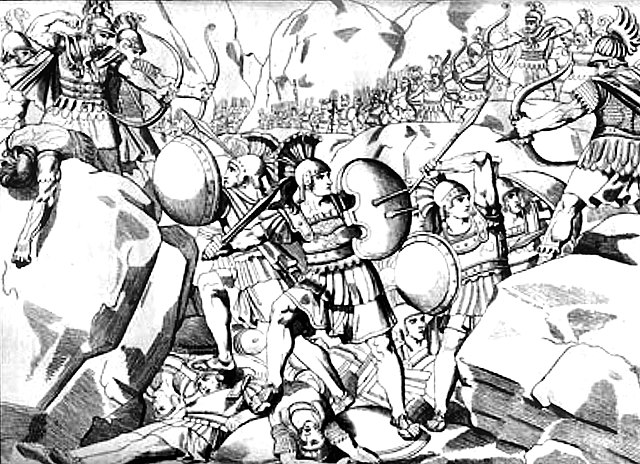If you have ever had the chance to read historical sources from ancient history, you’ll notice a common trend. While our editor-in-chief, Bryan, has pointed out many of those, one persistent motif is the exaggerated use of numbers to give a sense, but by no means an accurate one, of the scale of ancient life, especially when it comes to warfare. Thus, the Achaean fleet that sailed to Troy was of a thousand ships or the Three Hundred Spartans held off an army of one million Persian troops at the Battle of Thermopylae. The most any reasonable historian can say of these encounters is that “a lot of those dudes” fought against “many less than them.” Indeed, it is the indefatigable work of archaeologists who can help us get a real sense of scale in history. Due to their work, alongside historians, experts can posit that one million people did live in the city of Rome during the Principate (27 BC to AD 180) while doubting that truly one million soldiers fought under Xerxes during his second invasion of the Greek peninsula.
While such nitpicking, as outside observers may call it, can seem arbitrary, it is in fact incredibly important to building a realistic conception of history. Furthermore, the problem of “getting the scale right” is not only one that affects ancient history. For example, the logistical and tactical implications of command decisions at the Battle of Gettysburg vastly change if the Army of Northern Virginia did indeed have ten thousand enslaved laborers tending to the needs of the army’s supply while the Army of the Potomac used its own soldiers. Think about it: if the Army of Northern Virginia used enslaved laborers to mend uniforms and tents, carry wounded soldiers back to field hospitals, cook and prepare meals, carry and tend ammunition, care for pack animals, and complete the other host of duties that soldiers in a nineteenth century army needed to perform, then their presence would free that many more white Confederate soldiers to carry arms into combat. Using the example of ten thousand enslaved laborers, their presence would contribute ten thousand more muskets to Lee’s forces on July 2 and ten thousand fewer troops allocated to maintaining the logistical cohesion of his lines on July 3 while he prepared for assaults on Culp’s Hill and Cemetery Hill. This reality then makes the Union defense of its fishhook formation even more remarkable. For every available white Confederate soldier in regimental formation to assault Little Round Top, Sickles’ disastrous salient, or Cemetery Ridge, Meade and Union Corps commanders needed to hold a company or even an entire regiment back to do the logistical jobs the army required. Such numbers could negate any tactical advantage in size the Army of the Potomac brought to Gettysburg in official statistics and make the desperate situation of the Union army that much more dire (and its victory that much more impressive).
Essentially, scale matters for understanding the impact, and significance, of historical events. Another great example of scale’s importance is that of Marcus Tullius Cicero, the onetime consul and senator in the Late Roman Republic assassinated in the wake of Caesar’s own assassination. If Cicero never shared or published his speeches or essays, they would constitute a footnote in Roman literature rather than a key source for understanding the politics and society of the Late Roman Republic. Again, this is where scale matters. Cicero has long been the focus of Classicists and archaeologists due to the role he played in exposing and subverting a conspiracy against the Roman Republic and the essential role he played as an orator, scholar, philosopher, and politician in the Late Roman Republic. If Cicero’s works were more in the vein of Emily Dickinson than Abraham Lincoln, his impact and importance to historical study would diminish from that of staple reading for any scholar of the Late Roman Republic to a subset of Roman literature only the rare scholar would really know.
Consequently, it is the responsibility of historians and archaeologists to work together to corroborate historical sources with the archaeological record to present as accurate portrait of the past as possible. This work is not just for ancient historians either. While a huge excavation of preserved battlefields is probably impossible, new readings of documents, Confederate ordinances, and reports from towns and cities about the use of impressed enslaved laborers will lead to new insights into the way that slavery sustained both the Confederate homefront and battlefront and bring a new level of accuracy to the prosecution of the American Civil War. In fact, such findings, if widespread enough in scale, could help explain the war’s longevity despite the vastly inferior numbers and resources of the Confederate armies. In other words, a demonstration that Confederate armies relied on enslaved labor in the field more extensively than previously known could explain how their degraded manpower problems only became apparent as emancipation revved up and was not just a factor of losing white men to attrition while enslaved people fed Confederate armies. A proper sense of scale could thus recast portions of the Civil War, or any history for that matter, in new lights.
